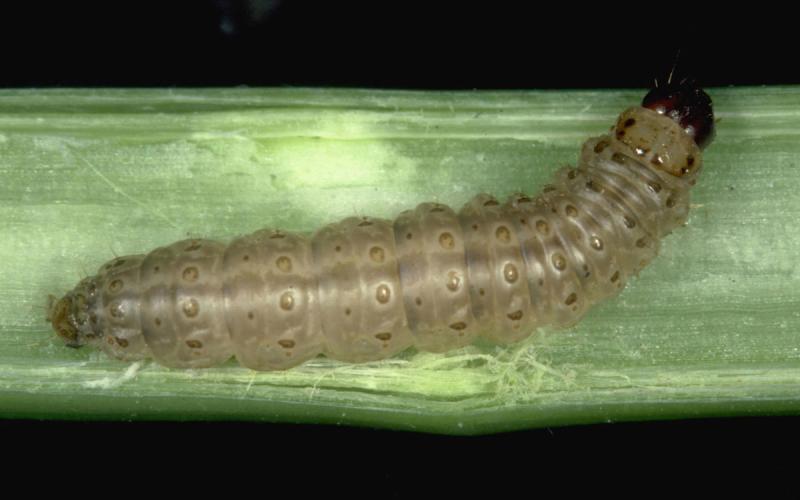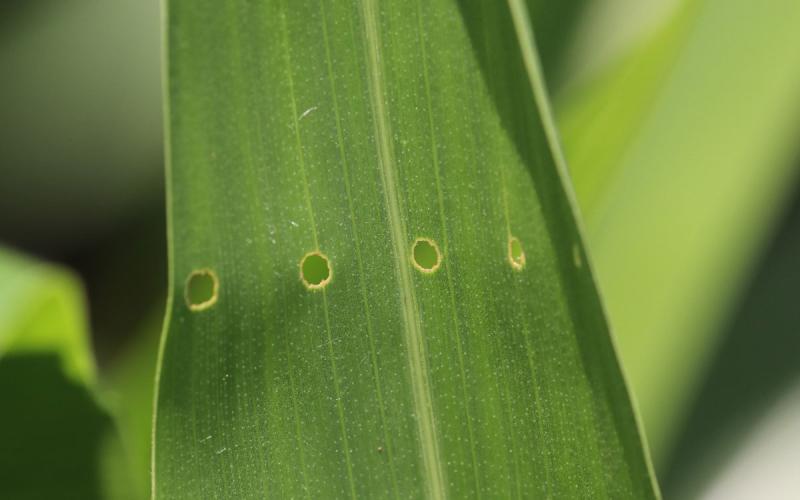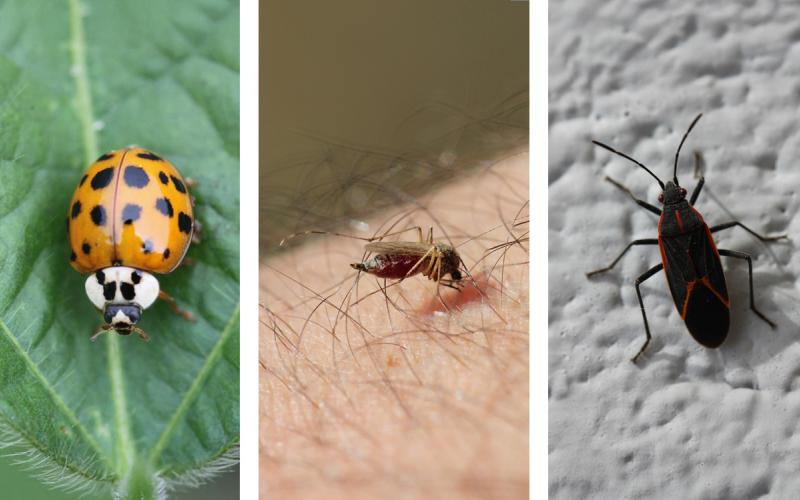Written collaboratively by Adam Varenhorst, Philip Rozeboom, Patrick Wagner, and Brad McManus.

European corn borer caterpillars (Figure 1) have been observed in conventional corn at several locations in South Dakota. In these fields, the caterpillars have been observed in the whorl and upper stem. Indicators for the presence of European corn borer caterpillars in corn are a line of straight holes in the upper leaves that is often referred to as shot-hole injury (Figure 2). These holes are an indicator that a European corn borer caterpillar fed on the leaf while it was still curled in the whorl.
In South Dakota, there are populations of European corn borer that have one generation per year in the northern areas of the state, and populations that have two generations per year in the southern areas of the state. The fields that are observing caterpillar defoliation and caterpillars in the upper whorl are in areas where the European corn borer has two generations per year.

Scouting
Scouting for European corn borer caterpillars is time intensive. For each field, 20 plants from five areas need to be examined (100 plants total for each field) for signs of defoliation. If defoliation is present, the whorl and upper stem need to be dissected to determine the number of European corn borer caterpillars that are present and their location within the plant. The University of Illinois has a worksheet that can be used to determine if an insecticide application for European corn borers would be profitable.
Management
European corn borers don’t receive as much attention now as they did prior to the release of Bt corn hybrids that have traits for managing the caterpillars. However, in areas where conventional corn is planted the European corn borer can still be an issue as it was never completely eradicated from the state.
Without management from either Bt hybrids or insecticides the European corn borer caterpillars can cause 2-6% yield losses per plant. Some plants will have more than one European corn borer caterpillar feeding within the stem, which can result in yield losses as high as 12% per plant. Managing European corn borer caterpillars with insecticides is difficult because the caterpillars tunnel into the stalk from the whorl. Insecticides must be applied when the caterpillars are still in the whorl and haven’t tunneled into the stalk. Once they begin tunneling, the insecticides won’t be able to reach them.
For a list of insecticides that can be used for European corn borer management, please refer to the current edition of the South Dakota Pest Management Guide: Corn.


